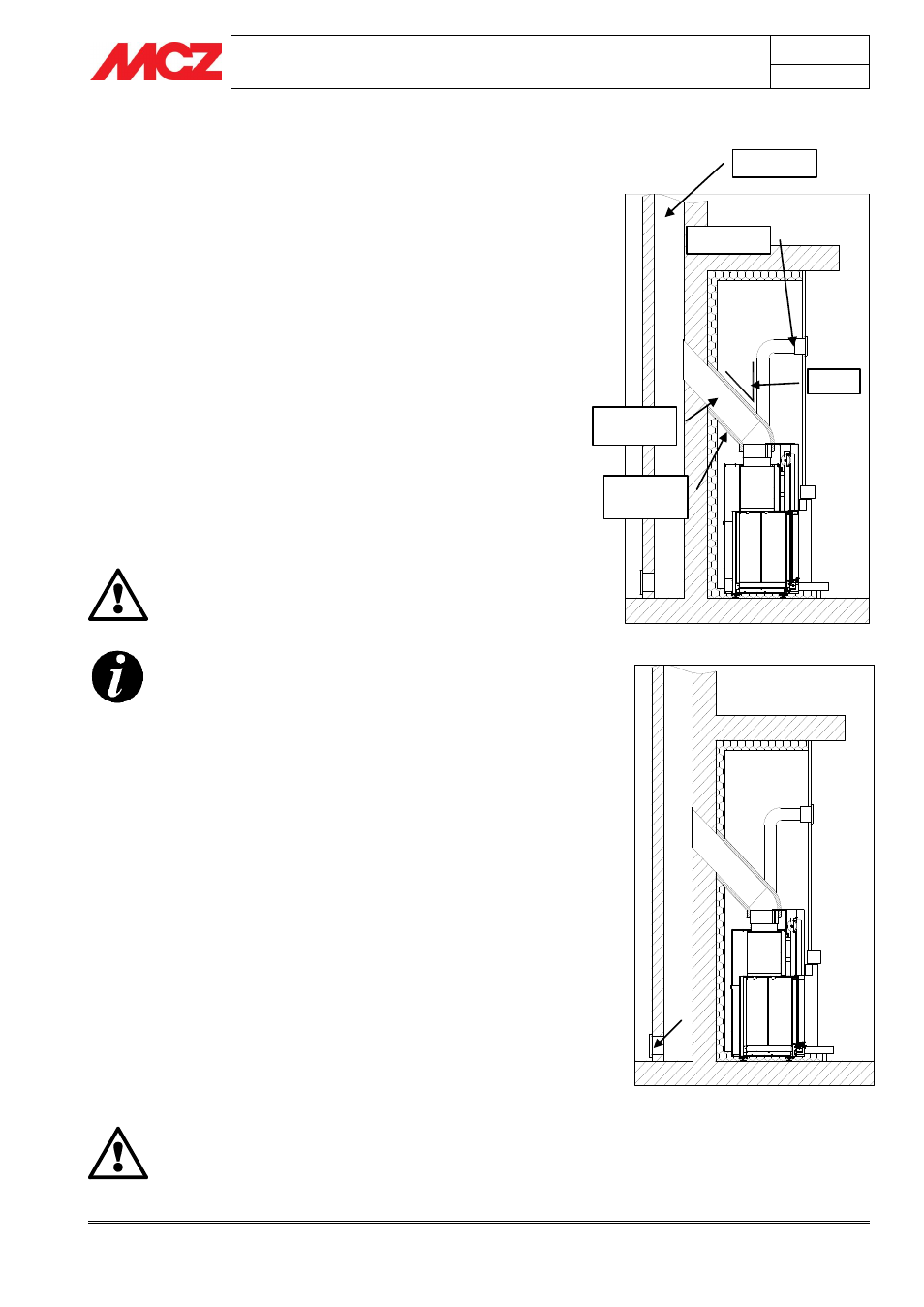Connection to the flue pipe, Flue pipe – MCZ Forma Wood 115 User Manual
Page 9

INSTALLATION AND USE MANUAL
Chapter 2
page
9
Theoretical notions for installation
Technical service – MCZ S.p.A. all rights reserved - Reproduction prohibited
2.4. CONNECTION TO THE FLUE PIPE
The connection to the flue pipe is a very important element. The
connection must be made with a great deal of care; in the event of
erroneous or anomalous construction, it is extremely difficult to remedy
without damaging the hood liner. In addition, the connection is made in
a part of the stove where temperatures are very high, and for this
reason it is important to use materials that are capable of resisting heat
and also the acidity of the fumes produced by combustion.
Before beginning work, please note the following:
The connection must have a maximum inclination of 45° to
prevent excessive build up of condensation produced in the
initial start-up stages of the closed fireplace and/ or excessive
adhesion of creosote. This also prevents smoke evacuation from
slowing down.
The unions must be made of metal and suitable for the
specific operating conditions of the product and marked
EC (EN1856-2). The use of flexible and extending metal
pipes is not permitted.
The elements of the connection must be perfectly sealed.
The connection to the flue pipe must be neither too long (to
prevent obstructions) nor too short (to prevent smoke leakage).
If metal connecting pipes are used, they must be
insulated with suitable material such as ceramic fibre
matting, to avoid deterioration of the masonry and of
the decorative hood liner.
IMPORTANT!
Any increase in the section of the connecting pipe
must start immediately above the hood of the
fireplace and not along the flue pipe section.
2.5. FLUE PIPE
The flue pipe is a fundamental element in discharging smoke and
therefore must have the following requisites:
be waterproof and thermally insulated.
be made of suitable heat-proof materials that are resistant to
the effects of combustion products and any possible
condensation.
have a vertical arrangement with deviations from the axis of
no more than 45° and without kinks.
must be suitable for the specific operating conditions of the
product and marked EC (EN1856-1, EN1443).
must be suitably sized to accommodate the draught/smoke
disposal requirements necessary for the correct functioning of
the product (EN13384-1).
have an internal section which is preferably circular.
be cleaned if pre-existing and has operated beforehand.
The flue pipe is of primary importance for the correct
functioning and safety of your fireplace stove.
Example of fireplace stove connection
Flue pipe
Hood grille
Smoke
connection
Ceramic fibre
insulation
45° max
Typical diagram of a correctly laid flue pipe
with a chamber including a sealed hatch to
collect and remove solid materials produced
during combustion positioned at the foot of
the external rising section.
